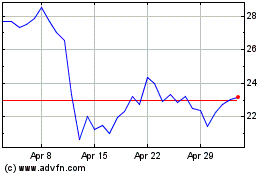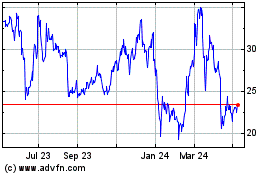Binance Upgrades Proof Of Reserves Verification For Better User Privacy
10 February 2023 - 10:40PM
NEWSBTC
Binance, the world’s largest exchange by user count and trading
volumes, has upgraded its proof-of-reserve (PoR) verification
system, per an update on February 10. Binance Integrates
ZK-SNARK In Their PoR Verification System The exchange has now
integrated “Zero-Knowledge Succinct Non-Interactive Argument of
Knowledge” or ZK-SNARK. By using this architecture in their
proof-of-reserve verification system, the exchange said they would
better protect sensitive user information, keeping them private
from third parties. Related Reading: Binance Lauds United Kingdom’s
Proposals To Properly Regulate Cryptocurrencies Vitalik Buterin,
the co-founder of Ethereum, first suggested ZK-SNARK. It is a
zero-knowledge cryptography method where a user can demonstrate
that they own an item or asset without necessarily disclosing the
knowledge or interacting with the prover or verifier. Beyond this
implementation by Binance, ZCash relies on ZK-SNARK in its shielded
transactions. Following this upgrade, Binance has revealed
that it has added four new tokens to its PoR system, pushing the
total number of coins supported to 13. Assets supported include
Bitcoin, Tron, Tether, SHIB, Solana, Chainlink, and others. The
exchange plans to add more coins in the days ahead. Besides
adding more coins, the exchange is also open-sourcing the code
behind its verification system. Accordingly, any other
platform or exchange interested in this style can integrate as it
is or with minor tweaks without seeking permission from any party,
including the Changpeng Zhao-led exchange. By open sourcing,
the technology, the objective, Binance explained, is to increase
transparency and allow the broader community to benefit. We are
making the code for Binance’s PoR system open-source because we
want to continue to provide more transparency for our users, so
that industry peers and the community can benefit from this
innovative technology. The Fall Of FTX Is Why Users Demand More
Transparency In November 2022, crypto exchange FTX filed for
bankruptcy. Further investigations revealed that Sam Bankman-Fried
misused user funds through its trading wing, Alameda
Research. This was a trigger for centralized exchanges to
prove that user clients were safe. By issuing proof-of-reserve
statements, several exchanges, including Binance, OKX, Bybit, and
others, issued statements. Still, this didn’t prevent users from
moving coins from centralized exchanges to non-custodial wallets.
Users moved over $12 billion of assets in two months
between November and December 2022. While the push for asset
transparency is positive and ensures that exchanges don’t commingle
funds, there remain fine points on the best ways for exchanges to
conduct proof-of-reserves and who exactly should do it. Proof
of reserves using zero knowledge could have prevented this whole
mess… who’s building a solution to hold centralised actors in
crypto accountable? — Jamie Burke ⛺️ (@jamie247) November 12, 2022
Related Reading: Binance Integrates Binance-Pegged BUSD On Optimism
Network Specifically, there are questions about whether exchanges
were issuing proof-of-assets rather than proof-of-reserves,
detailing that every coin deposited by the user was sufficiently
backed and available in every network. Binance was the first
to publish its proof of reserves following the FTX collapse. But
since then, multiple crypto exchanges have also moved to publish
their proof of reserves in an effort to restore user confidence.
Feature image from Binance Academy, Chart from TradingView
Zcash (COIN:ZECUSD)
Historical Stock Chart
From Nov 2024 to Dec 2024

Zcash (COIN:ZECUSD)
Historical Stock Chart
From Dec 2023 to Dec 2024
